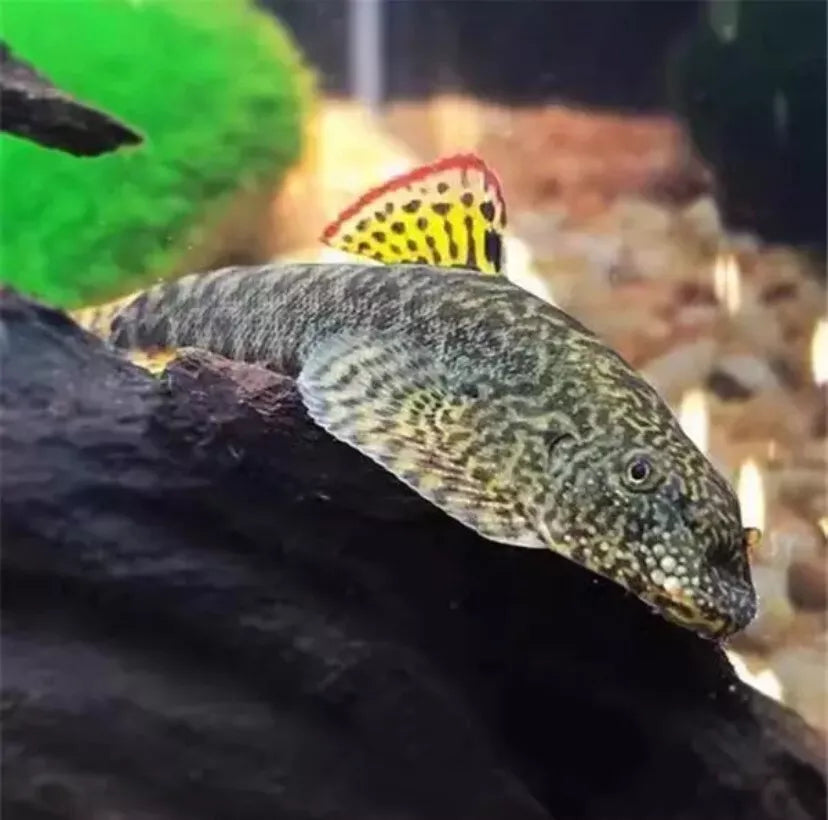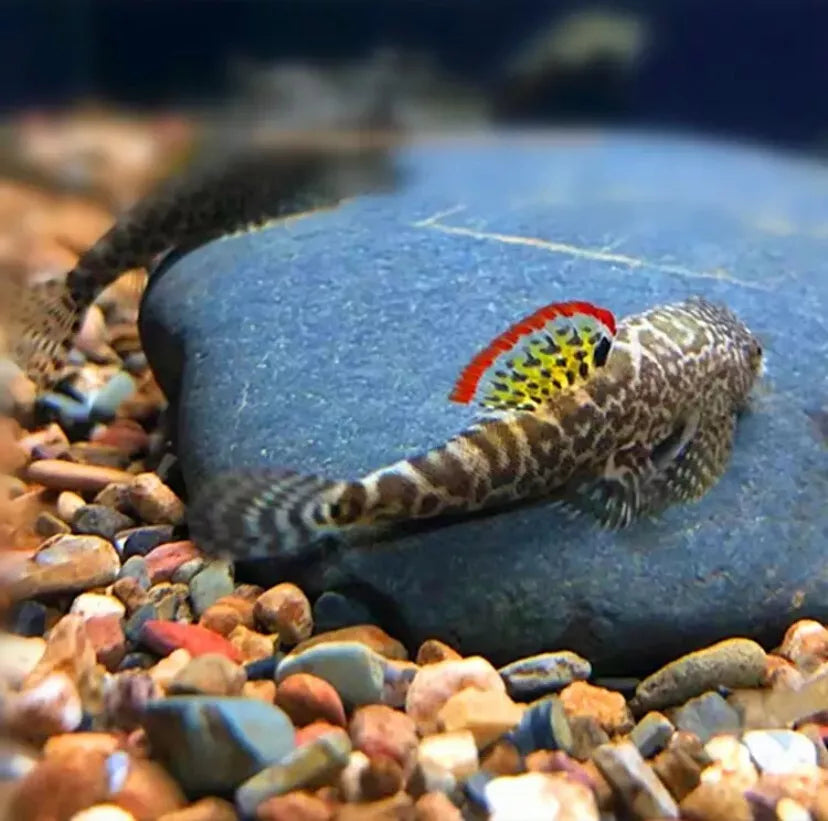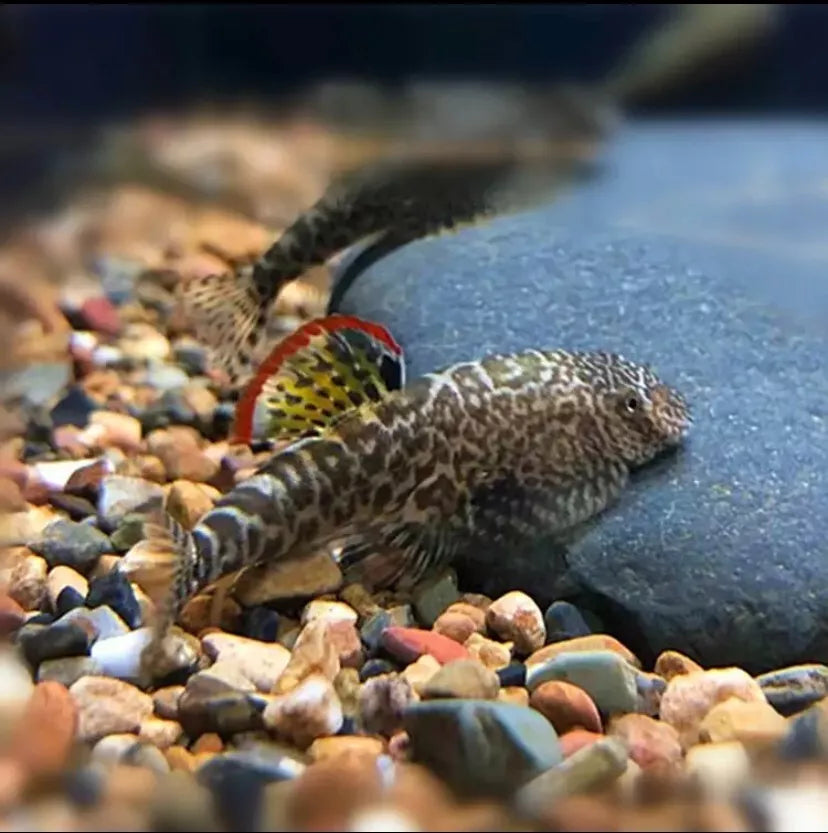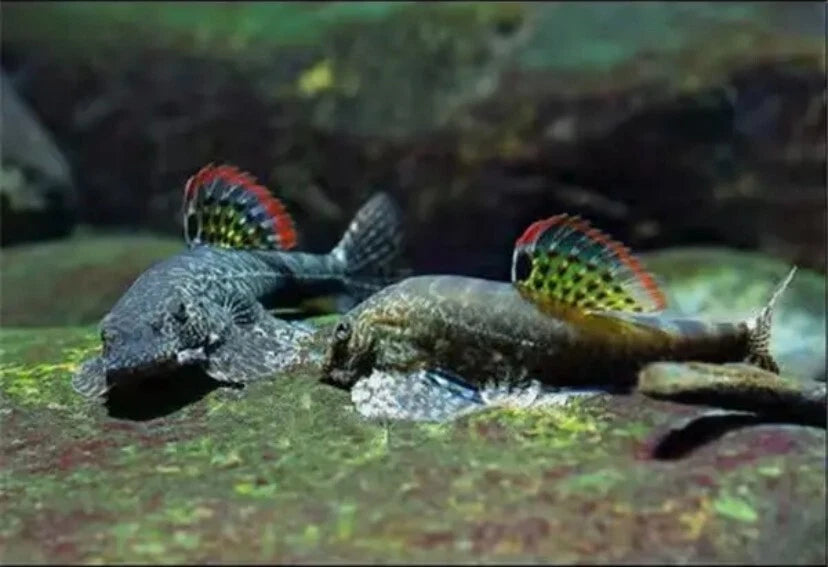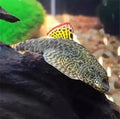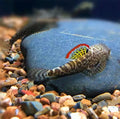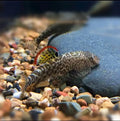Hillstream Loach myersi (Pseudogastromyzon Myersi)
-
Estimated Delivery:Jan 17 - Jan 21
-
UPS Next Day Air Shipping Charges 65$
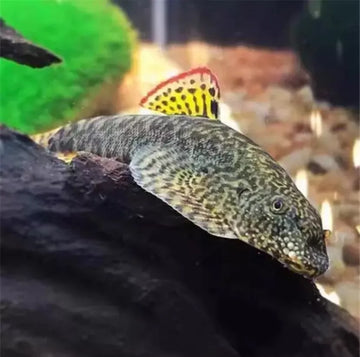
Hillstream Loach myersi (Pseudogastromyzon Myersi)
📦 Description
Pseudogastromyzon myersi, commonly called Myer’s Hillstream or Sucker-belly Loach, is a compact species reaching around 6 cm in length. It features a flattened body and sucker-like ventral surface for clinging to rocks in fast‑flowing streams of Guangdong and Hong Kong. Its typical pattern is mottled brown with variable red edging on the dorsal fin and a yellowish tint on the tail. This loach is a biofilm grazer and peaceful shoaling fish, best suited to mature, oxygen-rich aquariums where it can browse clean surfaces.
🧰 Care Instructions
-
Tank Size: Minimum of 20–25 gal (~75–95 L), with a long footprint and excellent circulation.
-
Flow & Oxygen: Strong unidirectional flow (~10× turnover/hour) and high aeration are essential.
-
Water Conditions:
-
Temp: 20–24 °C (68–75 °F)
-
pH: 6.0–7.5
-
Hardness: Soft to moderately hard (~1–12 °dGH)
-
-
Substrate & Decor: Smooth sand or fine gravel, rounded river stones. Provide plenty of flat rocks and hiding spots. Bright to moderate lighting to foster biofilm.
-
Diet: Natural diet includes filamentous algae, stalked diatoms, and detritus. Supplement with algae wafers, spirulina pellets, blanched vegetables, and occasional live/frozen foods like daphnia or bloodworms. Behavior & Social Needs: Peaceful and shoaling species. Keep in groups of 6 or more to encourage natural behaviour and reduce aggression. Males establish dominance via subtle sparring (“topping”) and show nasal tubercles. Females are slightly larger and more rounded.
-
Maintenance: Requires mature, stable tank with established grazing surfaces. Weekly partial water changes (20–30%) and use of sponge filters or powerheads to preserve biofilm is recommended.
-
Breeding: Known to breed in captivity. Males excavate spawning pits beneath pebbles; court females via circling displays. Eggs are fertilized and buried in substrate; fry emerge after a few days and feed on micro-organisms

